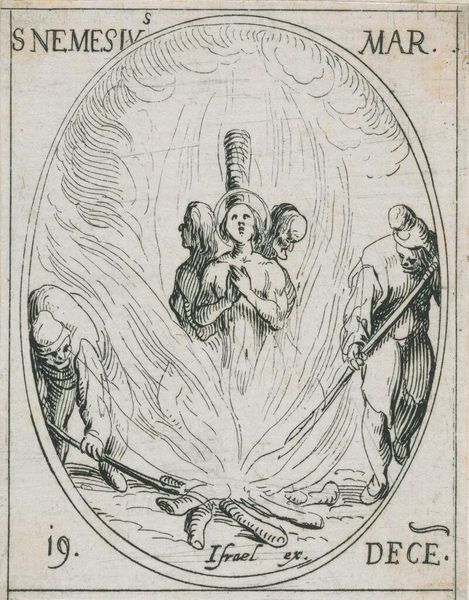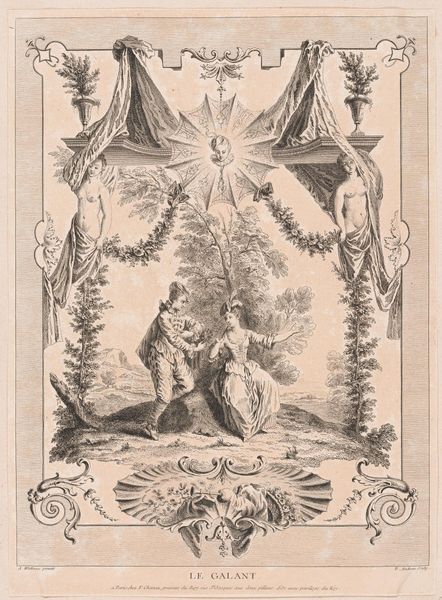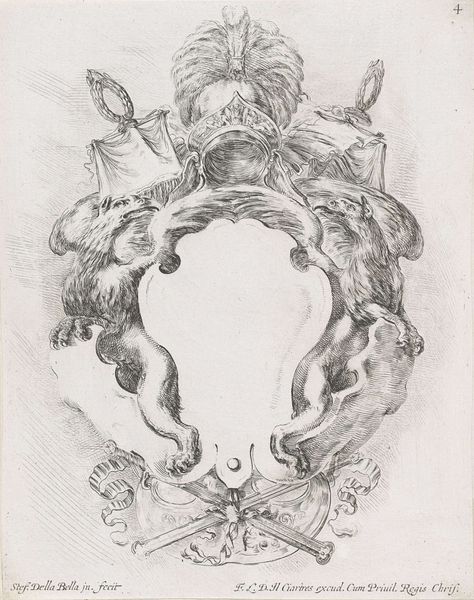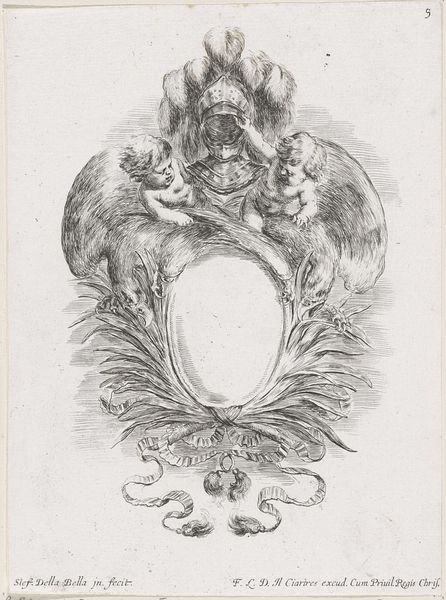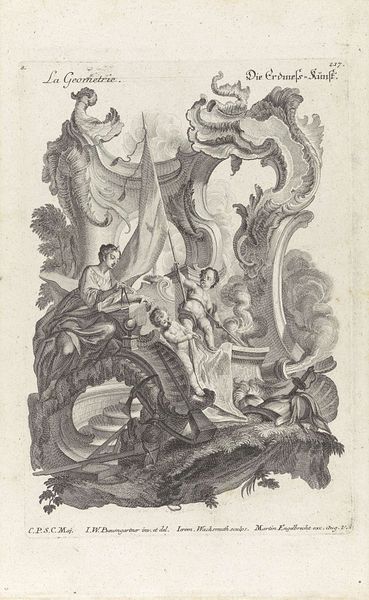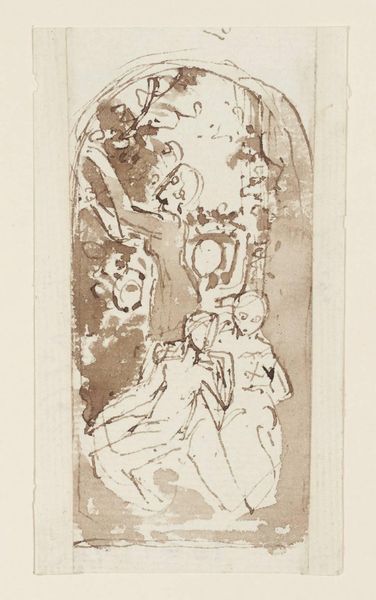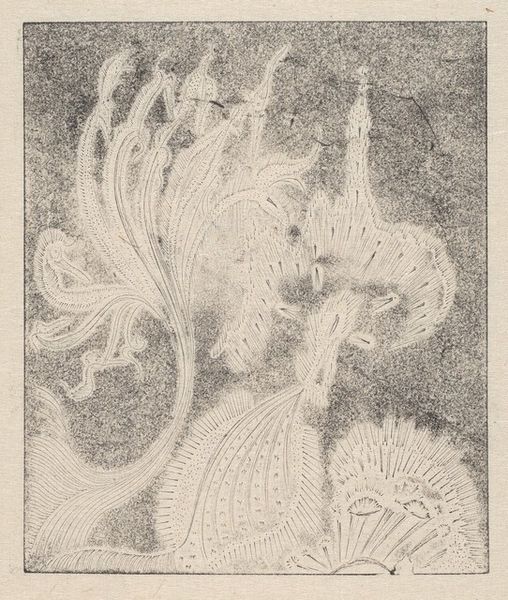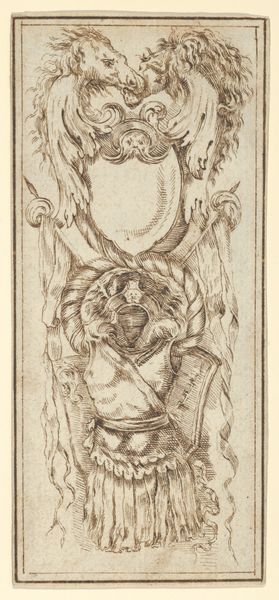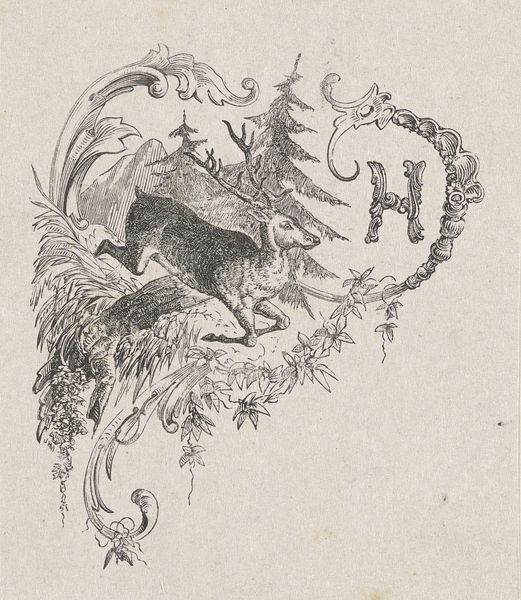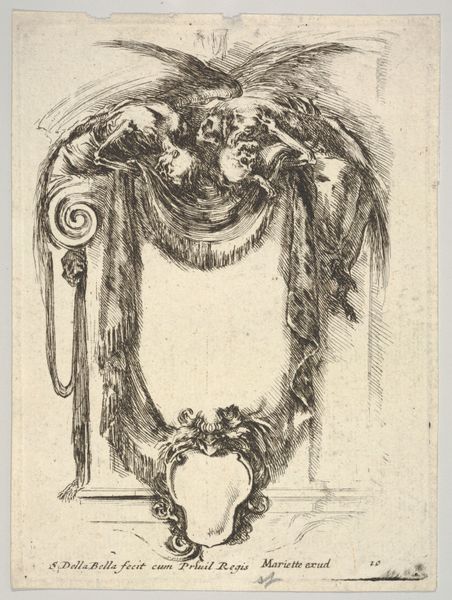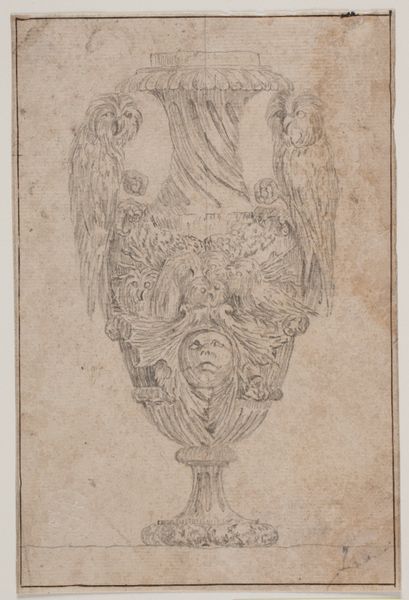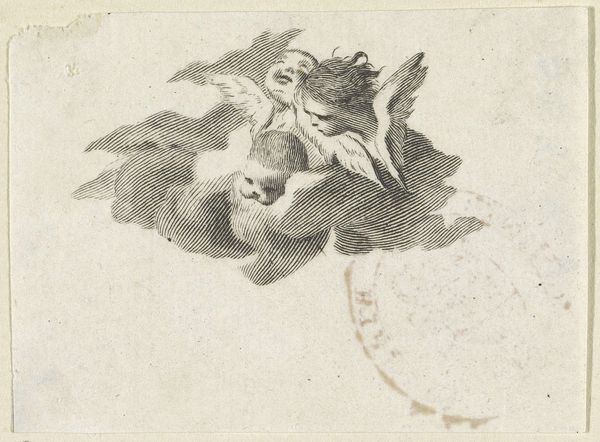
engraving
#
tree
#
baroque
#
landscape
#
figuration
#
vanitas
#
line
#
engraving
Dimensions: height 126 mm, width 92 mm
Copyright: Rijks Museum: Open Domain
Editor: Here we have Stefano della Bella's "Cartouche met lijkwade aan boomtakken en twee skeletten," an engraving from 1647. It's so detailed, yet eerie, with skeletons clinging to what appear to be barren trees framing a shroud. How do you interpret this work? Curator: The piece foregrounds the very *stuff* of mortality and mourning. Think of the copper plate, the labour of the engraver, and the dissemination of these vanitas themes to a wider audience through printed matter. Della Bella uses readily available materials to confront viewers with death. Notice, for example, how the texture of the bone contrasts with the smooth drape of the shroud: what statement could he be making about ephemeral luxury versus unavoidable decay? Editor: So you're saying the materials themselves—the inexpensive print versus the costly shroud—highlight the themes of death and vanity? It’s like, regardless of what you have in life, you end up the same. Curator: Precisely! Consider how the act of printing, a burgeoning industry in the 17th century, allowed such reflections on mortality to circulate widely. Was this a democratization of death, of a sort? How does that idea resonate with you? Editor: That’s interesting. It shifts my thinking from just the image to its function. It makes me wonder about who consumed these prints and where. Was it a memento mori for the masses, a reminder accessible to a broad section of society through material culture? Curator: Exactly! And that leads us to consider the social function of art beyond the traditional patronage system, highlighting how materials and processes impacted the reception and meaning of such works. Editor: I never considered prints as everyday reminders of death! It enriches my understanding by focusing on its material accessibility and purpose. Thanks for broadening my perspective! Curator: Indeed. By paying attention to the means of production and distribution, we can understand art not just as an aesthetic object but as a cultural artifact embedded in specific historical and economic conditions.
Comments
No comments
Be the first to comment and join the conversation on the ultimate creative platform.
